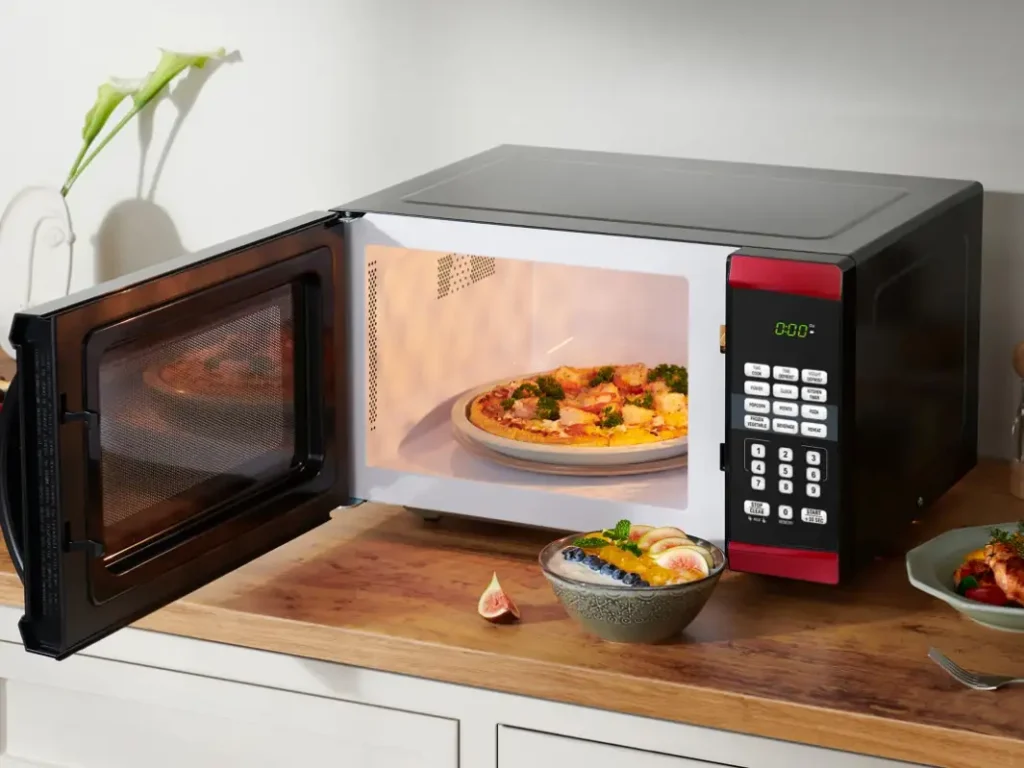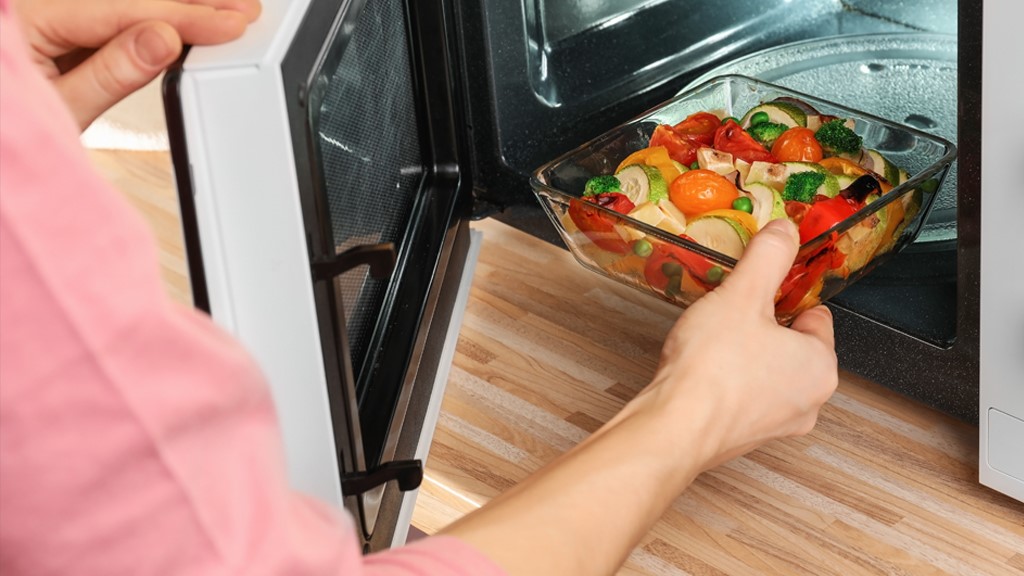Microwave cooking is a game-changer for anyone aiming to eat healthier. Unlike traditional methods, microwave cooking requires less added fats and oils, making it a nutritious choice. It harnesses microwave radiation to cook food swiftly, retaining its natural flavors and nutrients. For instance, steaming vegetables in the microwave preserves their vibrant colors and essential nutrients better than boiling. By incorporating nutritious ingredients like lean proteins, whole grains, fruits, and vegetables into microwave recipes, individuals can enjoy flavorful meals packed with goodness.
Understanding microwave cooking techniques empowers individuals to make healthier choices effortlessly. Throughout this article, we’ll delve into practical tips and tricks for microwave cooking, enabling you to whip up nutritious meals effortlessly.
Understanding the Health Benefits of Microwave Cooking
Microwave cooking stands out for its knack at preserving nutrients in food better than traditional methods. Let’s take vegetables, for example. When you steam them in the microwave, they retain more of their essential vitamins and minerals compared to boiling, where some nutrients can seep into the water. This means you get more nutritional bang for your buck with microwave cooking.

Another perk of microwave cooking is its minimal use of added fats and oils. Instead of drowning your food in oil for frying, you can use herbs, spices, or citrus juices to add flavor without piling on extra calories or unhealthy fats. This makes microwave cooking a smart choice for anyone aiming to cut down on fat intake while still enjoying tasty meals.
Tips for Microwave Cooking with Nutritious Ingredients
Microwave cooking opens up a world of possibilities for incorporating nutritious ingredients into your meals. Here are some practical tips to make the most of your microwave cooking experience:
Steaming Vegetables:
Steaming vegetables in the microwave is a breeze and helps retain their essential nutrients and vibrant colors. When you steam broccoli in the microwave, it stays crisp and retains more of its vitamins compared to boiling. To steam vegetables effectively, place them in a microwave-safe dish with a splash of water, cover with a lid or microwave-safe plastic wrap, and cook on high for a few minutes until tender. This method preserves the texture and flavor of the vegetables while locking in their goodness.
Cooking Lean Proteins:
Microwave cooking is perfect for preparing lean proteins like chicken and fish without adding extra fats. Microwaving a chicken breast seasoned with herbs and spices yields juicy and flavorful results. To prevent dryness, marinate the chicken beforehand or cover it with a damp paper towel while cooking. Similarly, cooking fish fillets in the microwave wrapped in parchment paper ensures they stay moist and delicious. Remember to adjust cooking times based on the thickness of the protein to avoid overcooking.
Utilizing Whole Grains:
Incorporating whole grains like quinoa, brown rice, and oats into your microwave meals adds fiber and nutrients. Microwaving oats with milk or water creates a quick and nutritious breakfast option. To cook whole grains in the microwave, combine them with water or broth in a microwave-safe dish, cover, and cook on high for the specified time. Stir halfway through cooking to ensure even cooking and fluffiness. Adding whole grains to your microwave meals enhances their nutritional value and provides sustained energy throughout the day.
Strategies for Reducing Added Fats and Sugars
In microwave cooking, there are smart ways to cut down on added fats and sugars while still enjoying flavorful meals. Here’s how:
Minimal Use of Oils:
To trim down on added fats, opt for cooking methods that require less oil. Instead of deep-frying foods, try baking, steaming, or microwaving them. For example, when making homemade potato chips, you can lightly spray the slices with olive oil and seasonings before microwaving them until crispy. This way, you get the same crunchy texture without the excess oil. Using non-stick pans or parchment paper can also help reduce the need for added fats when cooking.
Sweetening Naturally:
When it comes to sweetening your dishes, consider using natural alternatives like honey, maple syrup, or fruit purees instead of refined sugars. For instance, instead of adding sugar to your morning oatmeal, try drizzling it with a bit of honey or stirring in mashed bananas for sweetness. Similarly, when making desserts like fruit crisps or cobblers in the microwave, opt for fruit purees or natural sweeteners to enhance the flavor without loading up on sugar. This way, you can satisfy your sweet tooth without the added calories and processed sugars.
Incorporating More Fruits and Vegetables
To enhance the nutritional value of your microwave-cooked meals, consider adding more fruits and vegetables. Here are some practical ideas to get you started:
Microwave-Friendly Fruit Recipes:
Fruits can bring sweetness and freshness to your microwave creations. For a quick snack, try microwaving apple slices with a sprinkle of cinnamon until they’re soft and fragrant. Another option is to make a fruit crisp by layering sliced fruits like peaches or berries with a mixture of oats, flour, and a touch of sugar, then microwaving until bubbly and golden. You can also jazz up salads or side dishes by adding diced fruits like pineapple or mango for a burst of flavor and color.

Creative Vegetable Dishes:
Vegetables are versatile and can be transformed into delicious microwave meals. For a simple side dish, try microwaving mixed vegetables with a drizzle of olive oil and your favorite seasonings until they’re tender-crisp. Or, for a heartier option, stuff a bell pepper with a mixture of cooked quinoa, black beans, corn, and salsa, then microwave until the pepper is soft and the filling is heated through. You can also make a quick and nutritious salad by tossing together leafy greens, cherry tomatoes, cucumber slices, and a zesty vinaigrette dressing.
By incorporating more fruits and vegetables into your microwave cooking, you’ll not only add vitamins, minerals, and fiber to your diet but also enhance the flavor and variety of your meals.
Meal Prep and Batch Cooking
Using the microwave for meal prep and batch cooking brings several advantages, especially for those with busy schedules. One major benefit is its speed. The microwave cooks or reheats food quickly, saving valuable time. For instance, you can cook a large batch of rice in minutes, compared to the stovetop method which takes much longer. Moreover, the microwave ensures even cooking throughout, guaranteeing consistent results every time. This reliability means you can trust your microwave to produce tasty and nutritious meals without constant monitoring.
Another perk is its versatility. The microwave can cook a wide array of foods, from grains and proteins to vegetables and desserts. This versatility allows for diverse meal options, catering to different tastes and preferences. Additionally, its compact size makes it suitable for smaller kitchens or living spaces. You can easily store and reheat prepped meals without cluttering your countertop.
To maximize the benefits of microwave meal prep and batch cooking, consider these time-saving tips:
1. Plan your meals in advance and create a shopping list to ensure you have all the necessary ingredients.
2. Choose recipes that are microwave-friendly, such as casseroles, soups, and stir-fries.
3. Use microwave-safe containers with tight seals for storing and reheating meals.
4. Cook larger quantities of food at once and portion them into individual servings for easy grab-and-go meals.
5. Label and date your prepped meals for easy organization and to keep track of freshness.
Microwave Brands
When it comes to selecting a microwave oven for your cooking needs, it’s essential to consider various factors to ensure you make an informed decision. Microwave ovens come in a wide range of sizes, styles, and features, so understanding what each brand offers can help you choose the best one for your kitchen.
Panasonic stands out as a top choice among microwave brands, known for its commitment to innovation and quality craftsmanship. With Panasonic microwaves, you can expect advanced features like inverter technology, which provides more precise control over cooking temperatures and ensures even heating throughout your food. This technology is particularly beneficial for delicate dishes that require gentle cooking, such as steamed vegetables or fish fillets. Additionally, Panasonic microwaves often come equipped with sensor cooking options, which automatically adjust cooking times and power levels based on the food’s moisture levels and weight, resulting in perfectly cooked meals every time.
Toshiba is another brand that has gained recognition for its reliable and user-friendly microwave ovens. Toshiba microwaves are designed with convenience in mind, offering intuitive controls and pre-programmed cooking settings that make meal preparation a breeze. Many Toshiba models feature smart sensor technology, which detects humidity levels inside the microwave and adjusts the cooking time and power level accordingly. This ensures that your food is cooked evenly and prevents overcooking or drying out. Additionally, Toshiba microwaves often come with handy features like express cook buttons and quick-start functions, allowing you to whip up a meal in minutes.
Breville is a brand synonymous with innovation and sophistication, offering microwave ovens that are as stylish as they are functional. Breville microwaves are designed to complement modern kitchen aesthetics while providing exceptional performance. These microwaves often feature convection cooking options, allowing you to bake, roast, and crisp foods with ease. With Breville’s Element iQ technology, the microwave intelligently distributes heat for precise and consistent results, whether you’re cooking a frozen pizza or reheating leftovers. Additionally, Breville microwaves come equipped with a range of pre-programmed settings for popular dishes, making it easy to achieve professional-quality results at home.
Samsung is a trusted name in the world of home appliances, and its line of microwave ovens is no exception. Samsung microwaves are known for their innovative features and cutting-edge technology, making them a popular choice among consumers. Many Samsung microwaves feature ceramic enamel interiors, which are easy to clean and resistant to scratches and stains. This makes them ideal for busy households where convenience is key. Additionally, Samsung microwaves often come with advanced cooking options like PowerGrill functions, which allow you to achieve crispy and golden results without the need for a separate grill. The slim fry feature is another standout, offering a healthier alternative to traditional frying by circulating hot air around the food to produce crispy textures with less oil.
LG is another reputable brand that offers a diverse range of microwave ovens to suit various cooking preferences and needs. LG microwaves are known for their sleek designs and intuitive controls, making them a stylish and practical addition to any kitchen. Many LG models come equipped with Smart Inverter technology, which provides precise temperature control for more efficient and even cooking. This technology also helps to reduce cooking times and energy consumption, making LG microwaves a sustainable choice for eco-conscious consumers. Additionally, LG microwaves often feature EasyClean interiors, which are coated with a special non-stick material that makes cleaning a breeze. Simply wipe away spills and splatters with a damp cloth, and your microwave will look as good as new.
Frequently Asked Questions
1. Can I cook raw meat safely in the microwave?
Yes, you can cook raw meat safely in the microwave as long as it reaches the recommended internal temperature to kill any harmful bacteria. Use a microwave-safe dish, cover the meat with a lid or microwave-safe wrap, and cook it on high until it reaches the desired doneness. Remember to rotate and stir the meat periodically for even cooking.
2. How do I prevent food from drying out in the microwave?
To prevent food from drying out in the microwave, cover it with a lid, microwave-safe wrap, or damp paper towel to trap moisture. Adding a small amount of liquid, such as broth, water, or sauce, can also help keep the food moist during cooking. Additionally, avoid overcooking or using high power settings for too long, as this can cause the moisture to evaporate quickly.
3. Is it safe to reheat leftovers in the microwave?
Yes, it is safe to reheat leftovers in the microwave, but it’s essential to ensure they reach the proper internal temperature to kill any bacteria. Heat leftovers until they’re steaming hot throughout, stirring or rotating them halfway through heating to promote even reheating. Use microwave-safe containers and avoid reheating foods in plastic containers unless they are labeled as microwave-safe.

